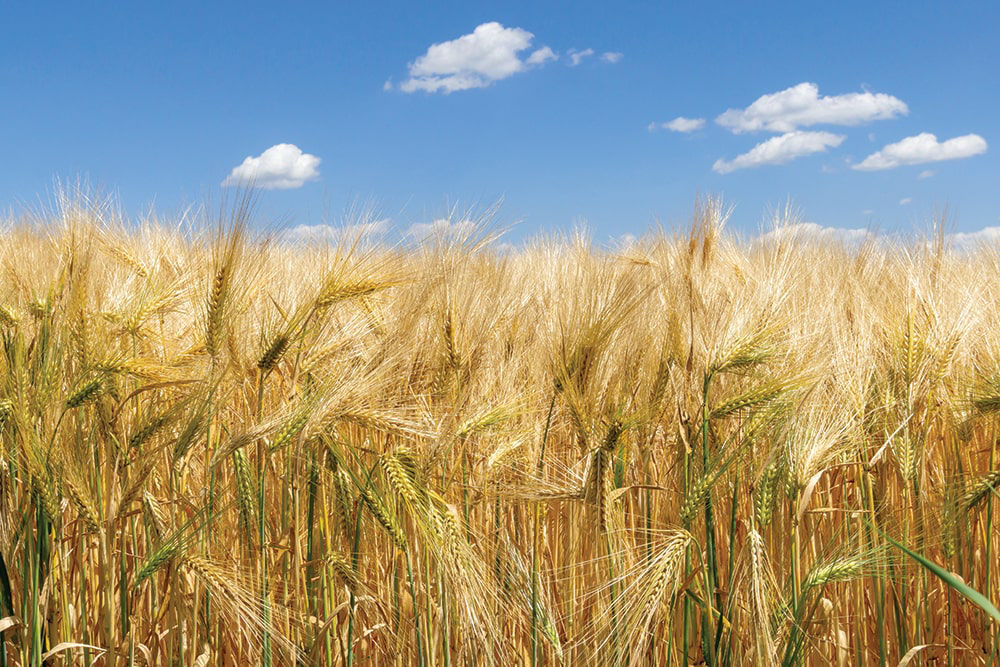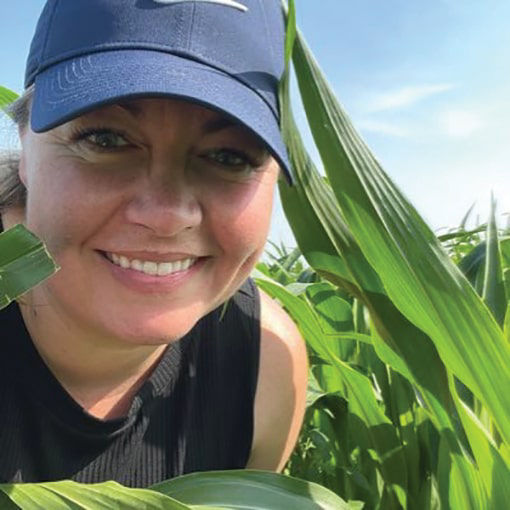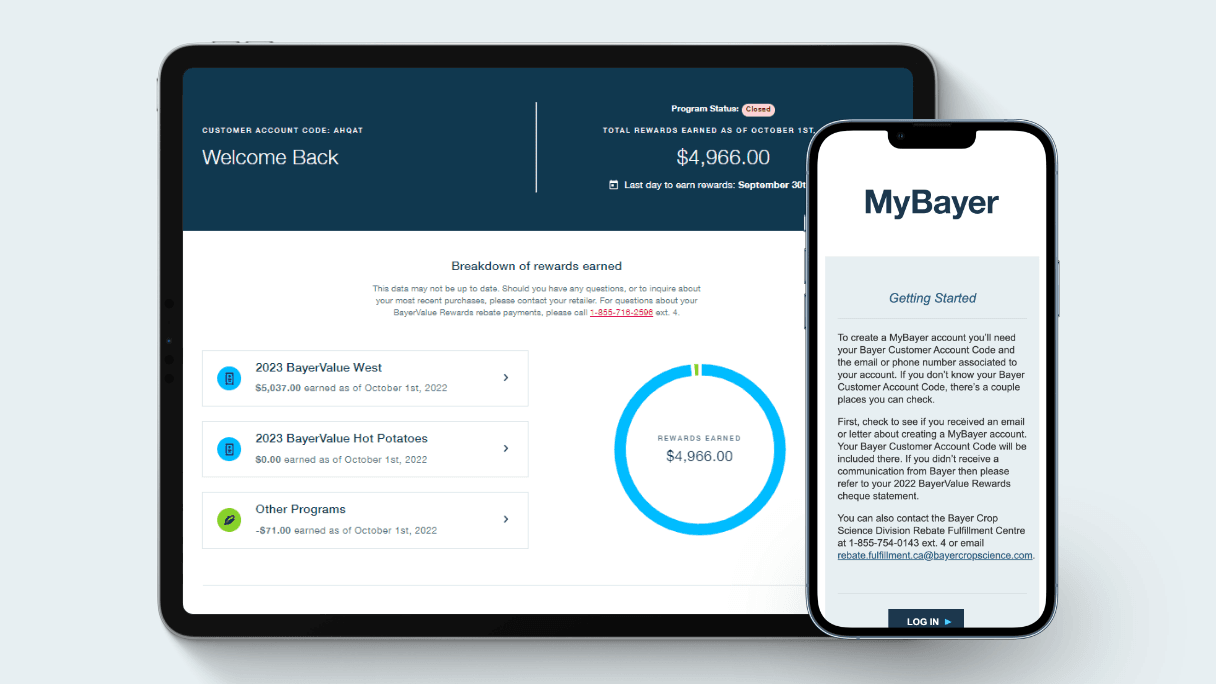Advances in cereal seed treatments help protect your investment
October 24, 2025

By Jennifer Barber
Growers today know the value of investing in good seed genetics to get the outcome they want, no matter the crop. But those genetics need protection. Treating seed has been around for millennia in one form or another as an insurance policy that protects plants when they are most vulnerable to help achieve a healthy, high-yielding crop.
“Seed treatment innovation has improved tenfold from where it was even 30 years ago,” says Ashley Smith, product manager for Bayer SeedGrowth Canada. “Farmers have been treating their seed since the early 1600s, and the applications were neither accurate nor easy. Today growers start their season right by making sure their seeds are protected from seed- and soil-borne pathogens right from the beginning, protecting their genetic investment.”
Smith says that most of the pathogens that are now in the ground have been there for a long time and are here to stay. The seed treatments developed by Bayer now use multiple modes of action combined with advanced formulations to combat those pathogens, while improving overall plant health from day one. They’re also easier to use.
“Today’s formulations are designed both for the health and establishment of the plant and also for precision and ease of use for the person doing the applications,” she says. “The rate of products applied now are very precise and give an even coating for uniformity of coverage, so the crop emerges even and strong. We work with equipment manufacturers to ensure that all the innovation we have put into a product formulation can be applied easily and effectively whether treating in a commercial setting, or on farm.”
Over the past several decades, the intensity of treated cereal acres has increased significantly. Not every acre needs treatment, and treatment intensity varies by geography, crop type, genetic tolerances to disease, and environmental risk level. But today, on average, 60 to 65 per cent of all seeded cereal and pulse acres in Canada are protected by treated seed.
And as disease profiles shift, so does the science of seed treatment. Smith says they are always looking at emerging threats to identify where they need to focus their research. “For example, the rhizoctonia strain found in Western Canada soil does not currently impact our cereal crops, but the strain found in soil just south of the border in the U.S. Pacific Northwest does,” he says. "We are watching it closely knowing it could become a concern in the future.”

New Raxil Rise looks forward
The chemistry of the Raxil brand has been trusted by growers for decades, and the research pipeline from Bayer constantly seeks to improve it. Registered this year and launching for the 2026 growing season, the newest formulation, Raxil Rise, was extensively trialed throughout the Prairies in 2025.
“Raxil Rise is the new cereal seed treatment brand that provides leading protection for cereal growers across the continent,” says Smith. “With the addition of penflufen in Raxil Rise, we can provide barley growers with needed enhanced protection against true loose smut. All cereal growers can continue to trust and have confidence in the formulation, its ease-of-use and handling compared to market competitors. This is a priority for Bayer as we launch Raxil Rise into the cereal seed treatment market.”
Raxil Rise was eight years in the making and went through four different formulations during that time. Before applying for registration, Bayer extensively trialed and tweaked it to meet the demands of cereal growers and applicators, and to make sure it maintained the use and handling qualities synonymous with the Raxil brand.
Emily Barteaux, an independent agronomist with 305 Agronomy in Foam Lake, SK, ran side-by-side field trials in 2025. She says that Raxil Rise was easy to use, flowed well, offered excellent coverage and there were no issues of product build up in treating or seeding equipment. “We found that the Raxil Rise side of our test plots continued to be more consistent, which made it easier to stage for in-crop and fungicide applications.”
Barteaux’s Raxil Rise plots stood out right from the get go. “It was out of the ground faster, but the biggest thing to note was the consistency,” she says. “This made harvest planning a lot easier in a year that was an absolute nightmare for inconsistent fields.”
Wider protection coming for pulse growers
Currently pending registration, Bayer is also hopeful to launch its replacement for Trilex EverGol in time for the 2026 spring treatment season. An experimental treatment at time of writing, EverGol Rise will be an all-in-one formulation for pulses that is better suited for use in commercial seed plants, and offers improved handling for growers treating on farm.
“This new formulation takes Trilex EverGol and adds in prothioconazole for better ascochyta control on pulses, something our customers have been asking for,” says Smith. “Ascochyta can cause root rot and damping-off while having a big impact on crop establishment moving into the season.”
During the 2025 growing season, EverGol Rise was trialed on 130 Research Authorization (RA) permitted pulse fields across Western Canada.
Barteaux participated in these trials as well and liked what she saw. “EverGol Rise was a dream (to apply) compared to Trilex EverGol,” she says. “The reduced water requirement made mixing substantially easier, and we found that we got more consistent results. We also found that we got more consistent coverage and did not have any issues with dusting off, or gumming up treating, handling and seeding equipment.”
She adds that she didn’t see much difference between the two treatments at first, but that changed as the season progressed. “EverGol Rise was a bit of an underdog,” says Barteaux. “We didn’t see much from it right off the hop, but it sure showed up to the party come fungicide season. When we got to fungicide timing, the EverGol Rise-treated plants were taller than the Trilex EverGol and they were more advanced into flowering.”
With these products, Bayer is investing in the future of agriculture by supporting the protection of genetics in today’s seed, says Smith. “No matter the crop, we need to be looking at the growing season right from the beginning and providing stable, easy-to-use seed-applied solutions that put growers and their businesses at the forefront.”
